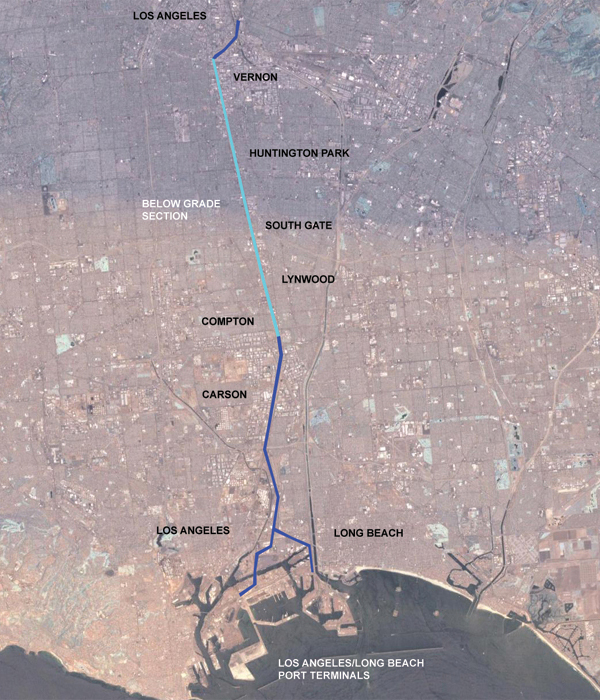Conceived of over 20 years ago, the corridor has not completely lived up
to the planner’s expectations. It was designed to handle up to 100
train trips per day, with an expansion capability of 150, however today
it averages only 35. Traffic congestion at the port has not been alleviated
on the highways leading out of the port, as was expected. One of the problems
is that the economics of the shipping industry have moved away from trains
in the last 20 years, and have shifted from the warehousing of goods downtown
to a more specialized system using trucks to separate cargo and divert it
to large distribution hubs in Riverside and San Bernardino where it is organized
for the more precise on-time delivery that companies now expect. An additional
phase is now being considered to extend the corridor to the eastern industrial
suburbs, and implement a “shuttle” train type system that could
better accommodate the new logistical models.
| 01 | 02 | 03 | 04 | 05 | 06 | 07 | 08 | 09 | 10 | 11 | 12 | 13 | 14 | 15 | next |
